Archaeological Site of Nalanda Mahavihara at Nalanda, Bihar
By Britta
What is the Archaeological Site of Nalanda Mahavihara at Nalanda, Bihar?
This archaeological site, sometimes called Nalanda University, contains the ruins of a Buddhist monastic and scholastic institute, including stupas, shrines and other buildings.
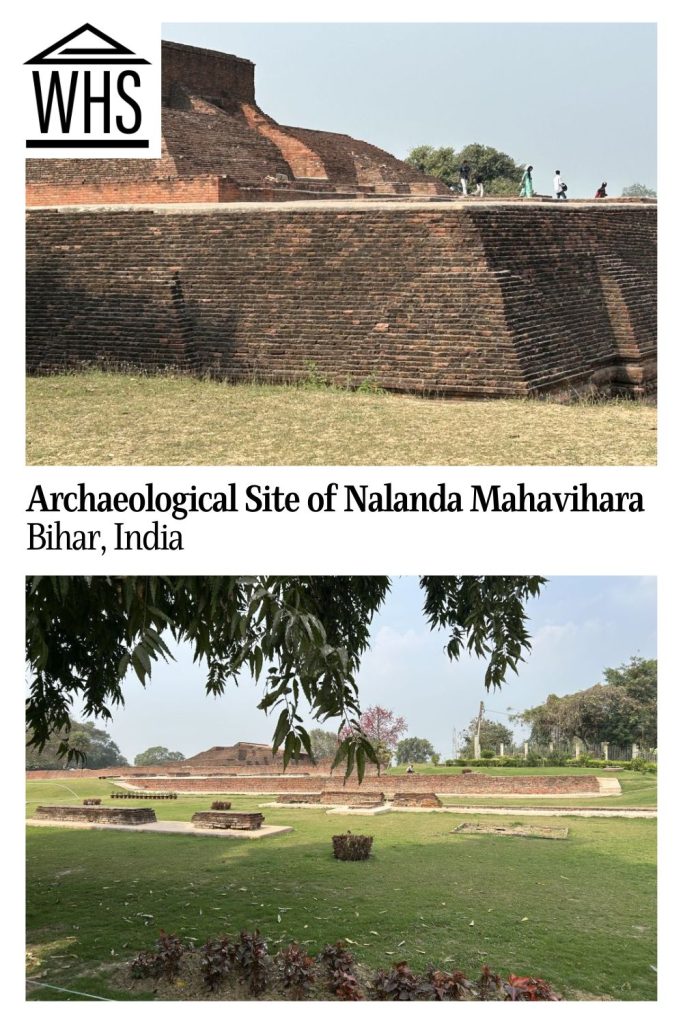
Disclosure: This article contains affiliate links. Making a purchase through an affiliate link will mean a small commission for this website. This will not affect your price. Privacy policy.
Why is Nalanda Mahavihara a UNESCO World Heritage site?
The Archaeological Site of Nalanda Mahavihara at Nalanda, Bihar is a UNESCO World Heritage site dating to as early as the 3rd century BCE. It was an active monastic site and center of learning from the 5th century CE all the way until its sacking in the 13th century CE. This makes it the oldest university on the Indian subcontinent, enduring for 800 years.
Nalanda Mahavihara was where certain principles of planning and architecture developed: principles that influenced these fields across India and further afield, particularly in terms of how Buddhist temples were designed.
According to UNESCO, ‘The historical development of the site testifies to the development of Buddhism into a religion and the flourishing of monastic and educational traditions.’
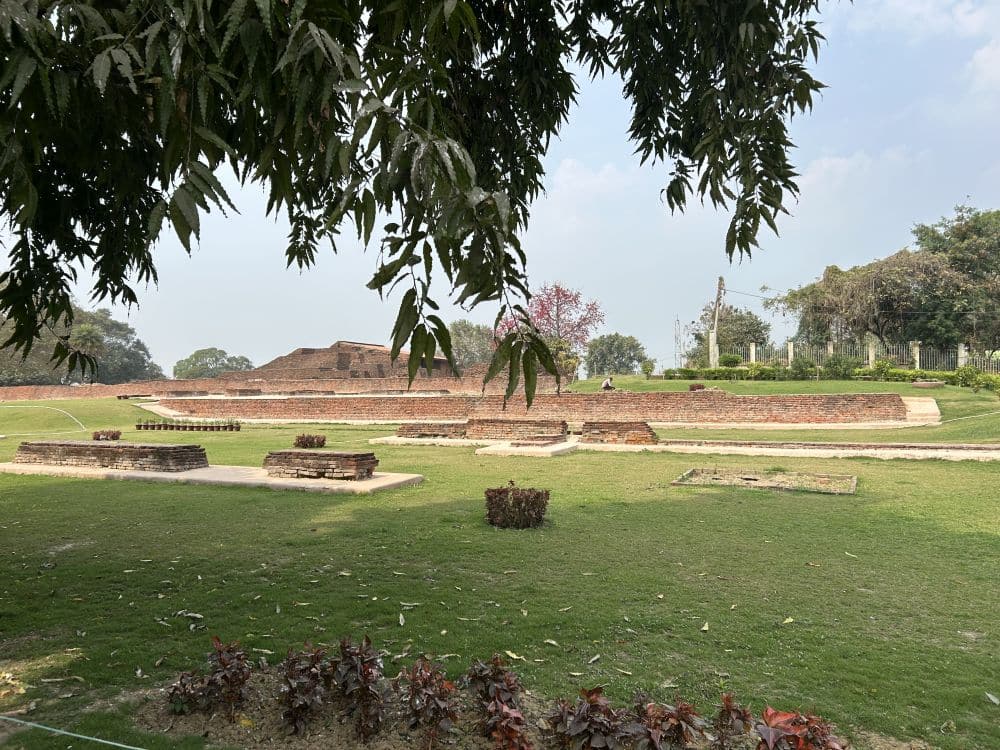
What can you expect on a visit to this archaeological site?
Nalanda University is a peaceful place located off a very busy road full of shops and restaurants on one side and fields on the other. The ruins are spread across a large area which is relatively flat and well maintained. There are sealed roads and paths that you can walk on around the complex.
You are welcome to wander the complex at your leisure. Each monument is well signed and brief information provided on each one. You can hire a local guide who will explain more about the history of the university, Buddhism and the significance of each of the ruins.
The architecture is in various stages of ruin. For the most part you will see foundations or remains of buildings made of red bricks. On some of them you can see intricately-carved stone or stucco. The remains of a large stupa is one of the main focal points.
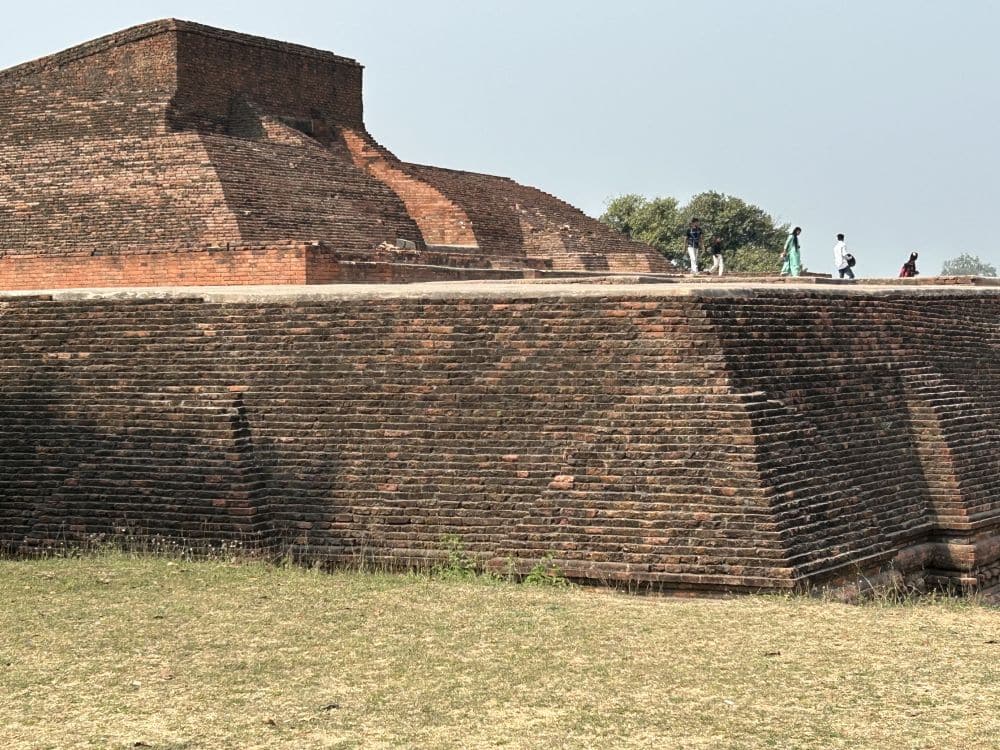
Is Nalanda Mahavihara worth visiting?
Nalanda is usually visited by Buddhists who are on pilgrimage.
While it is probably not worth a visit on its own, it is a common day trip for visitors who are staying in Bodhgaya. Other travelers who have some time and are looking for somewhere off the beaten track may also like to visit this site for its historical roots as well as the architecture.
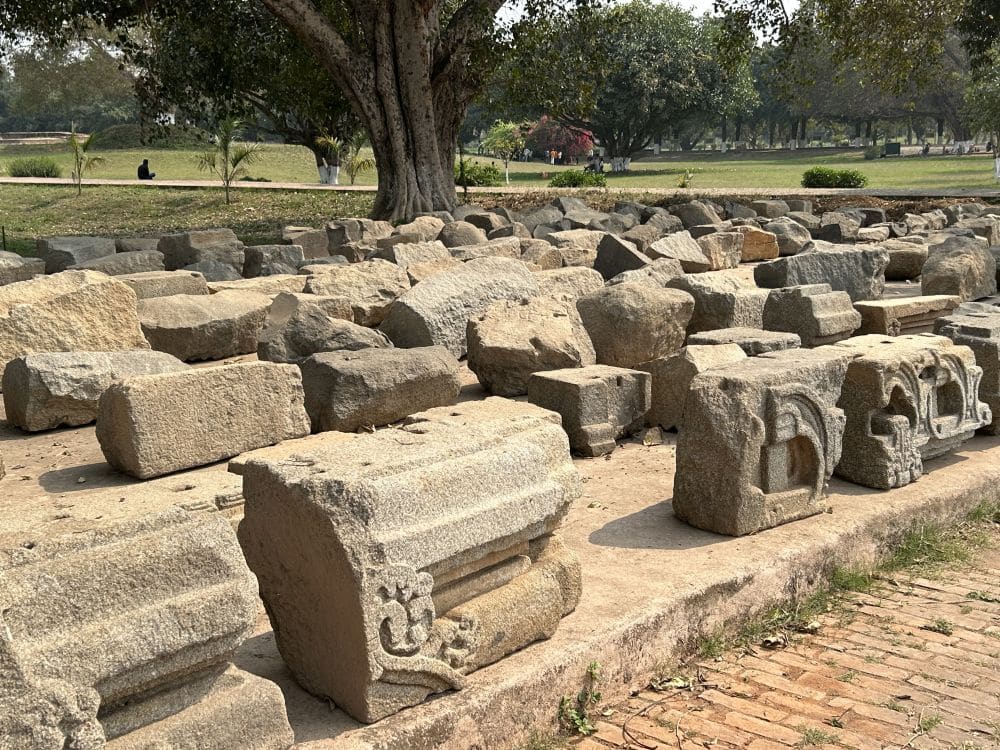
Tips for visiting Archaeological Site of Nalanda Mahavihara
The complex is open every day from 9am to 5pm and there is an entry fee payable (Rps 600 for foreigners over 15 years of age, Rps 40 for Indian residents at the time of writing).
The best time of year to visit Nalanda is from November to February. The rest of the year it is very hot.
There is not a lot of shelter close to the ruins so wear a hat or use an umbrella if it is hot and sunny. Surrounding the ruins are a lot of large trees and grass areas you can relax on.
Due to the size of the complex it is not overcrowded, but weekends can get busier with Indian tourists.
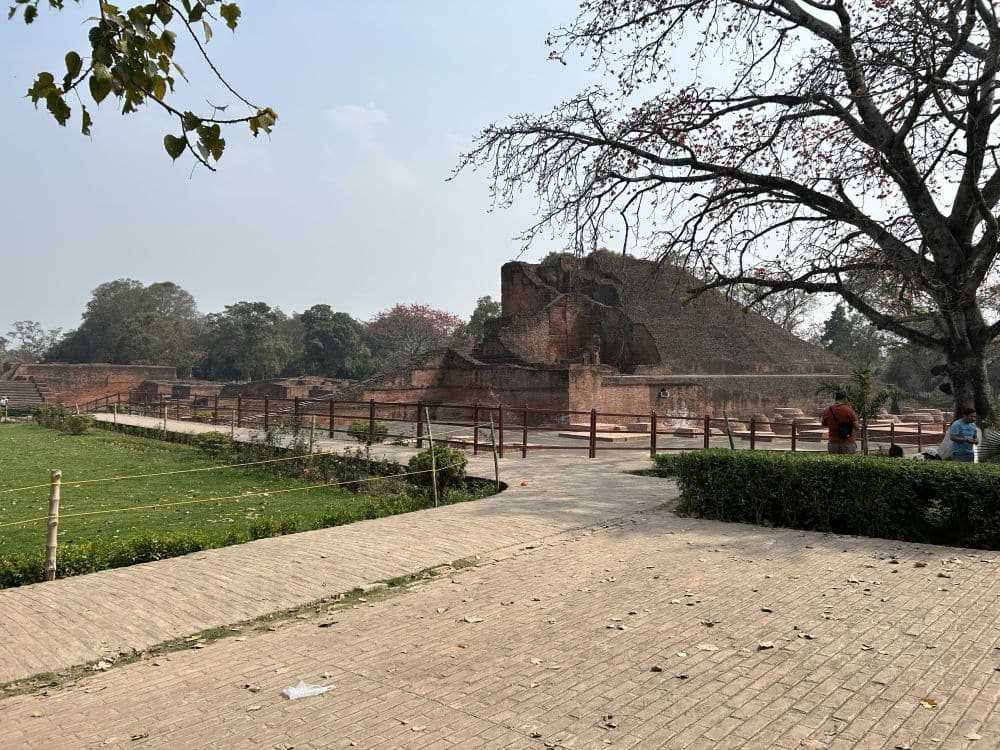
Across the road from the complex is the Nalanda Archeological Museum, a small museum housing Buddhist artifacts from the local area.
If you want to go for a little wander, there is an interesting and unique Buddha statue made from black stone. It is walkable from the ruins or there is a small road that takes you there. Turn left out of the front gate of Nalanda and walk down the road until you see a small paved lane that goes off to your left back towards the ruins. Follow this to the end. There, you’ll see another red-brick ruin and the temple that houses the Buddha statue.
Bodhgaya is a larger town nearby, home to another UNESCO site: Mahabodhi Temple Complex at Bodh Gaya. People usually visit Nalanda on a day trip from Bodhgaya, combined with the following:
- Vultures Peak Mountain in Rajgir, said to be frequented by the Buddha, who gave important sermons there. Pilgrims walk to this spot and make offerings.
- Vishwa Shanti Stupa, next to Vultures Peak, is one of 80 Peace Pagodas constructed worldwide. It can be reached via cable car.
Book a full-day tour from Bodhgaya that includes Nalanda Mahavihara and Rajgir.
The Glass Sky Walk, located at the Nature Safari in Rajgir, is also a popular tourist attraction nearby.
Book your accommodations in Gaya or nearer by in Nalanda.
Where is Archaeological Site of Nalanda Mahavihara at Nalanda, Bihar?
Nalanda is in the state of Bihar in the northeast of India. The nearest town is Bihar Sharif, about a half-hour away by car. The bigger city of Gaya is about 2-2.5 hours’ drive away.
To make it easier on yourself, there are many multi-day tours to Buddhist sites that include transportation.
Getting there by air
Limited international flights arrive at Gaya and Patna airport. Domestic flights are available from other cities in India to the airports closest to Nalanda, which are:
- Gaya airport (105 km / 65 mi from Nalanda)
- Lok Nayak Jayaprakash Narayan International Airport in Patna (95 km / 59 mi from Nalanda).
You will need to travel by other transport – rental car, taxi or bus – from these airports to Nalanda.
Book domestic flights and bus or train trips here.
Getting there by car
Travel time by car is approximately 2:10 hours from Bodhgaya, Gaya, or Patna. The highways are well maintained.
Think about renting a car for all or part of your trip in India, or sign up for a group or private tour.
Getting there by public transportation
Regular trains travel to Gaya station mostly from the Delhi to Kolkata route. Trains on this route have frequent delays in the winter months. Trains are also available from Patna to Gaya (travel times vary).
There are local buses from Gaya or Bodhgaya to Nalanda. Bus travel times vary.
Use caution about travelling at night.
For more information about the Archaeological Site of Nalanda Mahavihara, see Cultural India’s website.
Have you been to Nalanda Mahavihara? If so, do you have any additional information or advice about this UNESCO World Heritage site? Please add your comments below!

